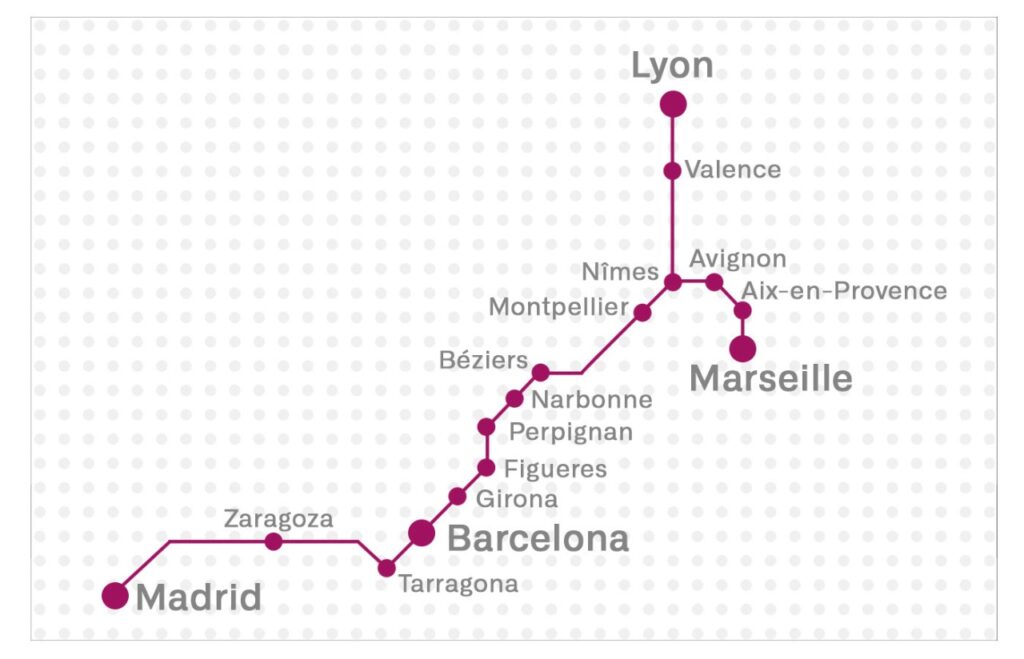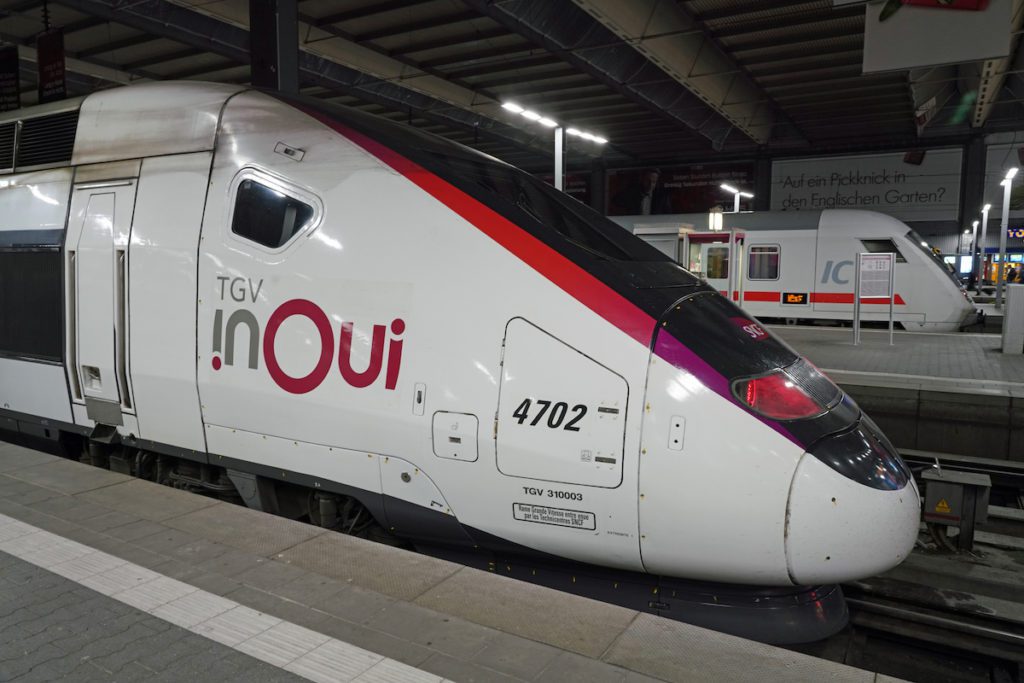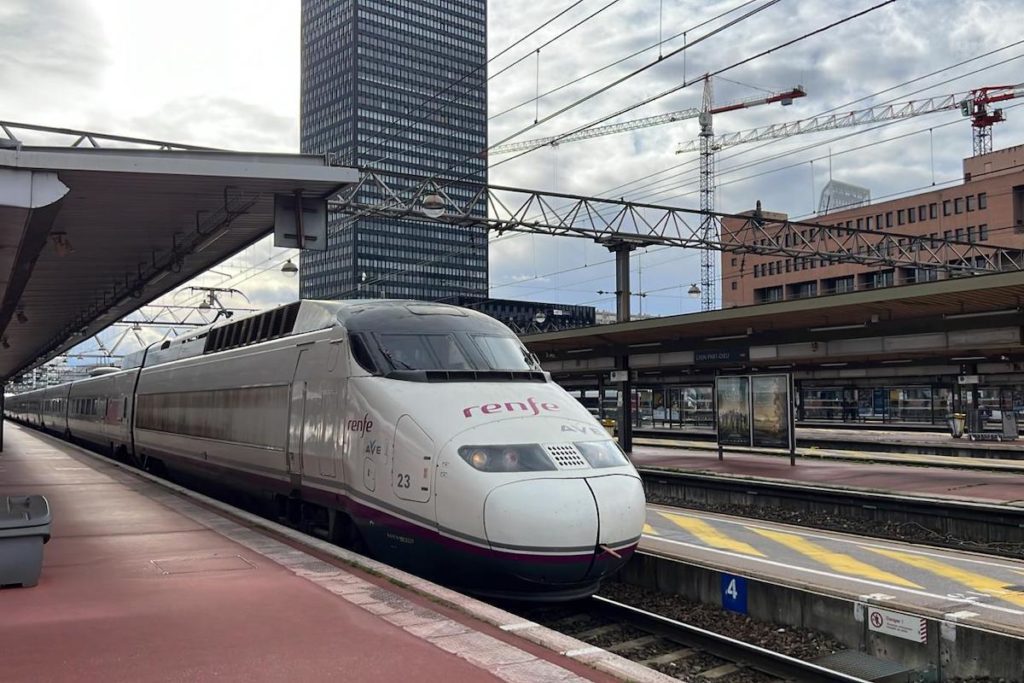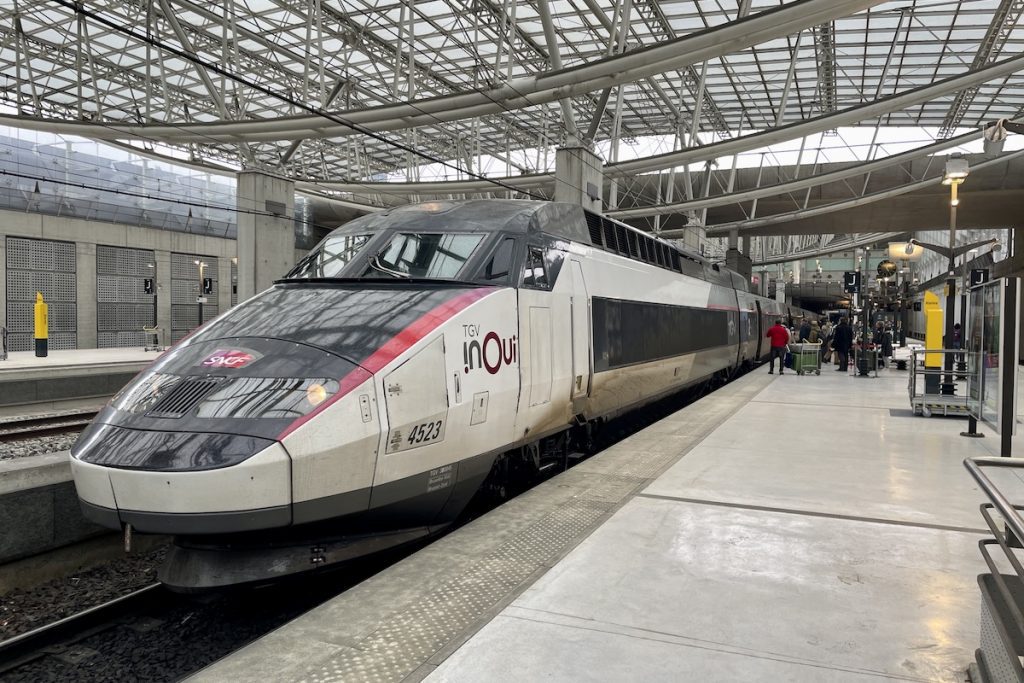Travelers will have a new option between Barcelona and Lyon, and Madrid and Marseille come July. That’s when Spain’s rail operator, Renfe, will launch new through high-speed train service on both routes, and reconnecting the country’s high-speed rail networks after an eight month hiatus.
Renfe will launch AVE high-speed train service from Barcelona to Lyon on July 13, and Madrid to Marseille on July 28. Both services will initially operate four-days-a-week — Friday through Monday — before expanding to daily in September and October, respectively. Travel times, however, will not exactly be speedy: Barcelona-Lyon will take just under five hours, and Madrid-Marseille just over eight hours.
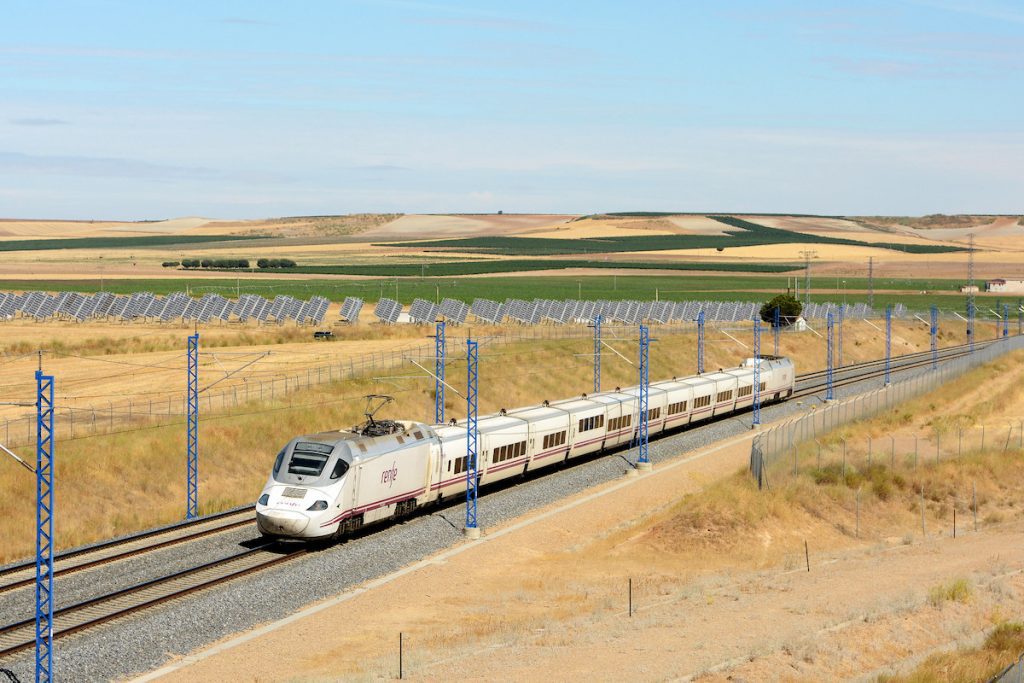
Travelers can fly between Barcelona and Lyon on either EasyJet or Vueling in an hour-and-a-half, and between Madrid and Marseille on either Iberia or Ryanair in an hour-and-forty-five minutes, according to Cirium Diio schedules.
However, an increased concern in climate issues in Europe could work to Renfe’s benefit. Air France executives have said that they doubt domestic France travel demand will ever return to 2019 levels as many travelers, including lucrative corporates, switch to trains for more trips where rail options are competitve.
Renfe’s new cross-border service is not the first on either the Barcelona-Lyon or Madrid-Marseille routes. France’s SNCF operated high-speed TGV trains in partnership with Renfe on both routes until December.
